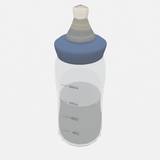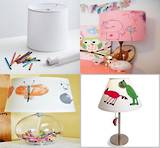Avoiding hazards around your home
|
Is your house child-safe? You may have bought ‘child-safe’ products for your little one, but you will still need to supervise them at all times to avoid any potential hazards. Products that need you to be especially vigilant include baby walkers, prams and strollers, cots, pyjamas and bath seats to name a few.
|
You might also be interested in ...
Inaccurate baby bottle markings
Recent findings show that some of the cheaper baby bottles available on the New Zealand market have inaccurate measurements marked on the side of them, meaning that some babies maybe getting infant formula that’s too concentrated, which in turn could cause possible health issues.
Make an arty lamp shade for your kids room
Does your kids room need a new lamp shade for the main light or their bedside table? Why not have a go at making your own! It's easy to turn your kids artwork into a unique, personalised lamp shade they’ll love having in their bedroom. Or if your little one is too young for drawing, why not create the artwork yourself instead.







You may have bought ‘child-safe’ products for your little one, but you will still need to supervise them at all times to avoid any potential hazards.
Products that need you to be especially vigilant include baby walkers, prams and strollers, cots, pyjamas and bath seats to name a few.
Check out these 5 tips on how to avoid hazards around your home:
1. Baby Walkers
In a baby walker babies can grab objects and move a lot faster than usual, so you need to be able to see your child at all times to help avoid any hazardous situations.Potential hazards include anything that could make your child fall or fall onto them; anything that your child could crash into, grab or hurt themselves on.
2. Bath Seats
Babies have drowned using bath seats. Plunket recommends that you don’t use them at all, but if you do decide to use a bath seat, your baby must be fully supervised at all times.Make sure you have everything you need for bathtime before you put your baby into the seat so that they are not left unattended, not even for a split second.
3. Cots
Babies spend a lot of time in their cots, so make sure that they are super-safe.Ensure your little one cannot get their head, fingers or toes stuck or trapped in the bars or cot fittings.
There shouldn’t be anything in or around the cot that will cause them to choke or suffocate.
As your child starts climbing, there is a greater risk of them falling out, so ensure the cot is far enough away from windows, doors and anything they can reach out for.
Portable cots are designed for convenience and are not as sturdy as standard cots. Every time your set one up ensure that it is stable and safe.
4. Prams & Strollers
With prams and strollers, make sure that the harness can firmly restrain your child.Check too that there are good brakes and locking devices so that your child can’t unexpectedly take off or that the pram or stroller will collapse whilst they’re in it.
5. Pyjamas
No nightwear is heat or flame resistant.A ‘low fire danger’ label or orange caution label in clothing (including pyjamas) indicates that the item has a lower risk of catching fire if it fits snugly. However, children should still stay at least a metre away from the fire or heater.
Loose fitting pyjamas, second-hand pyjamas and pyjamas with a red ‘high fire danger’ label should not be worn near a fire or heater. Read more in our article on pyjama safety.
For more information on avoiding hazards around your home visit the Ministry of Consumer Affairs website.
Check out our other Hot Topics on:
- How to test Baltic Amber teething jewellery for authenticity
- Pyjama Safety
- Car seat safety for kids in New Zealand
Image source:cultofcreativity.com